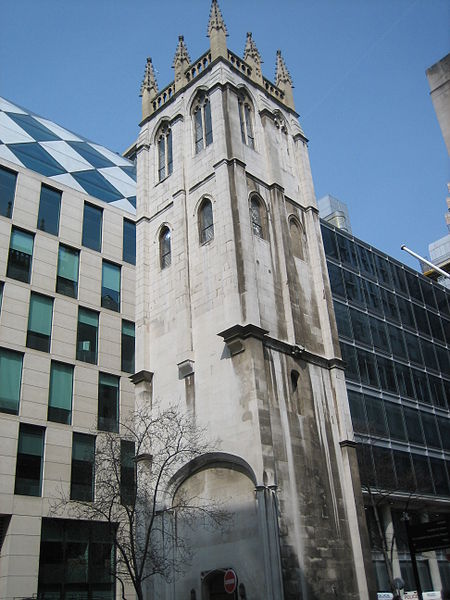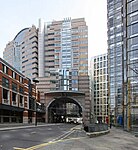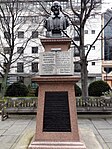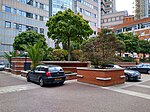St Alban, Wood Street
17th-century Church of England church buildingsBuildings and structures in the United Kingdom destroyed during World War IIChristopher Wren church buildings in LondonChurches bombed by the Luftwaffe in LondonChurches in the City of London, of which only the tower remains ... and 3 more
Grade II* listed churches in the City of LondonRuins of churches destroyed during World War IIUse British English from February 2015

St Alban's was a church in Wood Street, City of London. It was dedicated to Saint Alban. Of medieval origin, it was rebuilt in 1634, destroyed in the Great Fire of London in 1666, and rebuilt, this time to a Gothic design by Sir Christopher Wren. It was severely damaged by bombing during the Second World War and the ruins cleared, leaving only the tower.
Excerpt from the Wikipedia article St Alban, Wood Street (License: CC BY-SA 3.0, Authors, Images).St Alban, Wood Street
Wood Street, City of London
Geographical coordinates (GPS) Address External links Nearby Places Show on map
Geographical coordinates (GPS)
| Latitude | Longitude |
|---|---|
| N 51.516580555556 ° | E -0.094152777777778 ° |
Address
St Alban Church Tower
Wood Street 35
EC2V 7AF City of London
England, United Kingdom
Open on Google Maps










